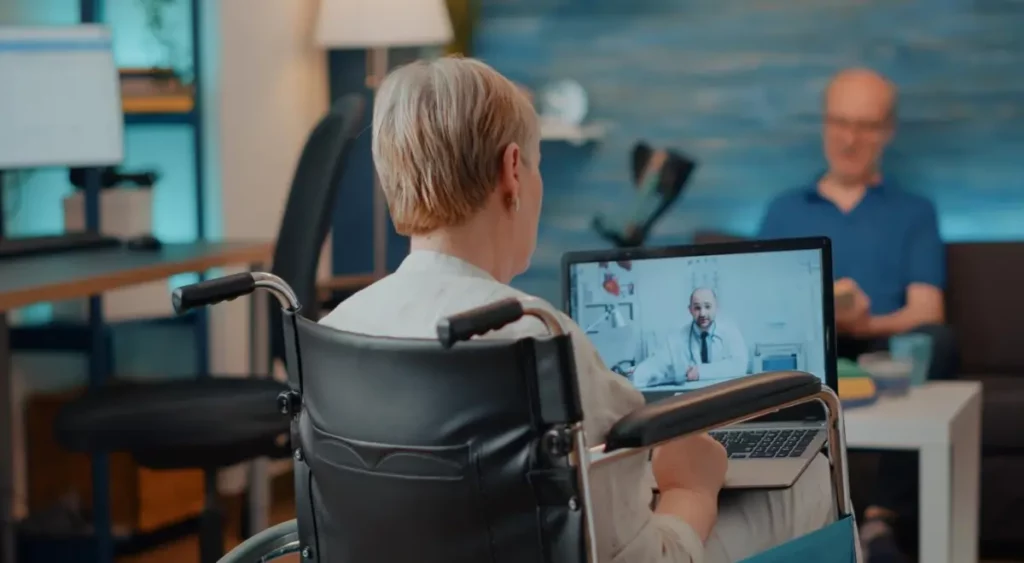Improved Oncology Care Outcomes With Remote Patient Monitoring (RPM)

Wondering how Remote Patient Monitoring (RPM) can assist you in your oncology practice outcomes? It is no secret that cancer is one of the most dangerous illnesses, often associated with low patient success rates. However, recent years have shown a notable improvement in health outcomes with the adoption of RPM.
Remote patient monitoring (RPM) is invaluable across various cancer treatments, including chemotherapy, tumor removal surgery, and other procedures requiring 24/7 close monitoring. Additionally, RPM assists in managing side effects, monitoring vital signs, ensuring medication adherence, and providing psychological support.
In this blog, we will discuss about the role RPM plays in improving the health outcomes and managing the side effects in cancer patients.
Table of Contents
ToggleThe Importance of Remote Patient Monitoring in Oncology
With the emergence of RPM technology, real-time monitoring of oncology patients is now easy, making it possible to detect complications and provide timely interventions and support whenever needed. This also helps in identifying underlying symptoms before they escalate, thereby preventing serious health complications in patients with a weakened immune system.
There are several benefits of implementing remote patient monitoring in oncology, including:
- Improves patient outcomes: By closely monitoring patients’ health data, healthcare providers can intervene and customize treatment plans to meet the healthcare needs of the patient. This, in turn, boosts health outcomes and quality of life.
- Reduces communication gaps: Remote patient monitoring enables seamless communication between patients and healthcare providers. Using cellular medical devices, patients can easily check their vitals, which are transmitted to the healthcare providers RPM platform for prompt feedback. This streamlined communication leads to better care coordination and improved patient satisfaction.
- Minimizes healthcare costs: With 24/7 real-time monitoring of patients’ health data and providing interventions whenever needed, RPM plays a significant role in reducing sudden hospitalizations and emergency room visits. This not only leads to cost savings but helps reduce health complications and improve the overall efficiency of cancer care delivery model at an oncology practice.
Ensure Optimal Oncology Care Outcomes With HealthArc’s RPM Platform
HealthArc is a leading advanced care management platform providing remote patient monitoring solutions to providers. The goal of our RPM software is to effectively monitor oncology patients and ensuring real-time patient-provider communication, data reporting, and medication adherence.
- Real-time monitoring: HealthArc’s RPM platform allows healthcare providers to continuously monitor patients’ vital signs like heart rate, weight and blood oxygen levels; and symptoms in real-time, enabling early detection of complications and timely interventions.
- Personalized care plans: Our platform enables healthcare providers to make interventions and introduce personalized care plans based on the individual needs and treatment goals of a patient.
- Secure communication: HealthArc ensures HIPAA compliant secure communication between patients and healthcare providers via audio/ video calls, SMS and email allowing patients to report their symptoms and receive guidance from the care team. This promises enhanced patient engagement and improved care.
- Data analytics: HealthArc’s RPM platform includes advanced data analytics capabilities that allow healthcare providers to analyze patients’ health data and identify trends or patterns that may require intervention.
Frequently Asked Questions (FAQs)
RPM in oncology means keeping track of cancer patients’ health data from afar using medical devices like vital sign monitors, weight scales, and oximeters, as well as secure digital platforms. It helps find bad effects early, keep an eye on side effects, and keep care going outside of the hospital.
RPM lets you keep an eye on things in real time, which makes it easier to find problems early, tailor treatment, stick to your medications, and get help from your provider more quickly. These changes often mean fewer hospital stays, a better quality of life, and better control of symptoms.
RPM can help with common side effects like dehydration, fever, tiredness, changes in vital signs, chemotherapy toxicities, and the risk of infection. It lets providers step in quickly when early signs show up.
HealthArc makes it easier to keep an eye on vital signs (heart rate, oxygen levels, and weight), communicate securely (via video, SMS, or email), create personalized care plans, use data analytics to find worrying trends, and improve communication between patients and oncology providers.
Yes. RPM can help reduce emergency department visits and hospital stays by catching issues early. Lower acute care utilization helps reduce costs for both providers and payers while improving patient outcomes.
- Making sure the device is accurate and dependable
- Taking care of data privacy and security, especially for patients with weak immune systems
- Patient adherence and engagement (remembering to use devices and report symptoms)
- We integrate RPM into clinical workflows to ensure timely handling of alerts.
Yes, if they are built correctly. Platforms like HealthArc make sure that patient information is safe by following HIPAA rules, sending data securely, encrypting communication, and having strict privacy controls.
With RPM platforms, patients can report symptoms, vitals are sent all the time, and care teams can send alerts or change treatment plans. This makes it easier for people to talk to each other and work together to provide care.
Yes, for sure. RPM helps find problems early, like infections or dehydration, so that they can be treated before they get worse. This means that fewer people need emergency or inpatient care.
Those undergoing chemotherapy, surgery, or other intensive cancer treatments, those at high risk of treatment side effects, those living in remote or rural areas with limited access to regular in-person visits, and elderly or immunocompromised patients who may be at higher risk are the primary beneficiaries of oncology RPM programs.
Conclusion
Remote patient monitoring plays a crucial role in oncology by allowing healthcare providers to closely monitor patients undergoing chemotherapy and other cancer treatments.
By leveraging HealthArc’s RPM technology, healthcare providers can effectively track patients’ vital signs, symptoms, and medication adherence in real-time, enabling early detection of complications and delivering efficient care coordination services. Our comprehensive remote patient monitoring in oncology, helps healthcare providers deliver high-quality care to oncology patients and help practices achieve their goals.
Request a free demo or feel free to talk to our team at +201 885 5571 to know how our software works.
Most Recent Blogs
Categories
Related Blog
- November 26, 2025 | Read Time: 14 mins
Return on Investment (ROI) of Remote Patient Monitoring (RPM): A Complete Guide for ACOs and Healthcare Organizations
The U.S. healthcare system continues its transition from fee-for-service models to value-based...
Learn More- November 24, 2025 | Read Time: 15 mins
Common RPM Pricing Models for Providers: A Profitability-Focused Guide
Remote Patient Monitoring (RPM) has rapidly emerged as one of the leading...
Learn More- October 23, 2025 | Read Time: 12 mins
How RPM Devices Improve Hypertension and Diabetes Outcomes in Medicare Populations
Remote patient monitoring (RPM) is transforming chronic care for Medicare beneficiaries. CMS...
Learn More


